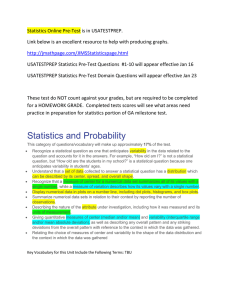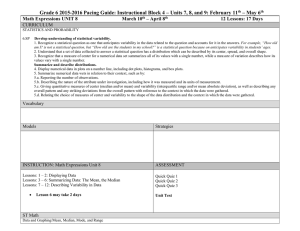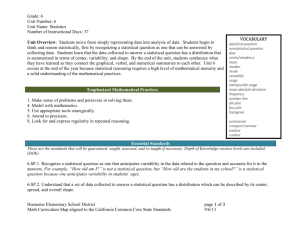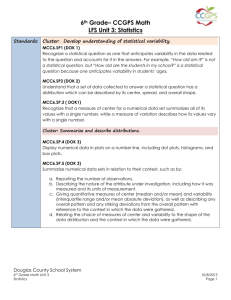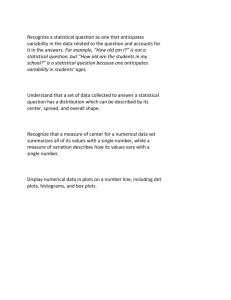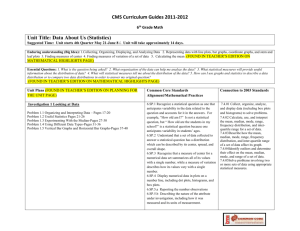Probability and Statistics
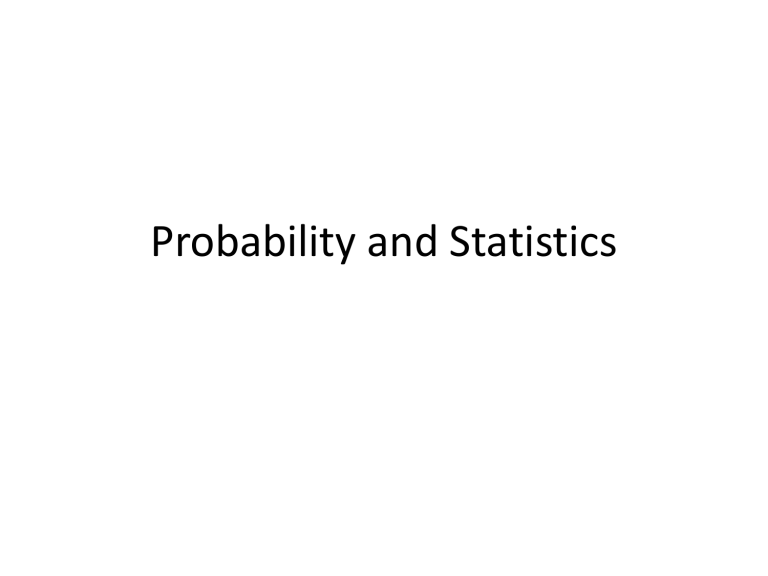
Probability and Statistics
RL 1-2
Popular Activities from the Past
Heads or Tails?
Coin Flip Trials Class Coin Flipping Trials
Group 4
Group 3
Heads
Tails
Group 2
Group 1
0 5 10 15
Probability in elementary grades prepares the foundation for
Statistics in 5
th
grade and beyond
• National Council of Teachers of Mathematics:
Probability standards in Pre-K – 2 nd grade
• www.IXL.com
international content:
Probability standards in Kindergarten
• Former Massachusetts Standards:
Pre-K – 4 standards include concepts of chance
• CCSS- No probability in elementary grades.
What happens in 6
th
Grade CCSS?
• Students are expected to begin statistics without any prior instruction in probability.
• Let’s look at the actual Common Core State
Standards.
• The CCSS set up our students and teachers to fail in 6 th grade.
CCSS Statistics and Probability 6.SP
Develop understanding of statistical variability
.
1. Recognize a statistical question as one that anticipates variability in the data related to the question and accounts for it in the answers. For example,
“How old am I?” is not a statistical question, but “
How old are the students in my school?” is a statistical question because one anticipates variability in students’ ages.
2. Understand that a set of data collected to answer a statistical question has a distribution which can be described by its center, spread, and overall shape
.
3. Recognize that a measure of center for a numerical data set summarizes all of its values with a single number, while a measure of variation describes how its values vary with a single number.
Summarize and describe distributions.
4. Display numerical data in plots on a number line, including dot plots, histograms, and box plots.
5. Summarize numerical data sets in relation to their context, such as by: a. Reporting the number of observations. b. Describing the nature of the attribute under investigation, including how it was measured and its units of measurement.
c. Giving quantitative measures of center ( median and/or mean ) and variability ( interquartile range and/or mean absolute deviation
), as well as describing any overall pattern and any striking deviations from the overall pattern with reference to the context in which the data were gathered.
d. Relating the choice of measures of center and variability to the shape of the data distribution and the context in which the data were gathered.
How can this be happening?
• Who decided our students are not ready for concepts of chance in elementary school?
• Who decided to surprise our 6 th graders with concepts they could have been prepared for in elementary school?
• This is just one example of the poor planning that went into the standards adopted sight unseen by Governors in 45 states.
